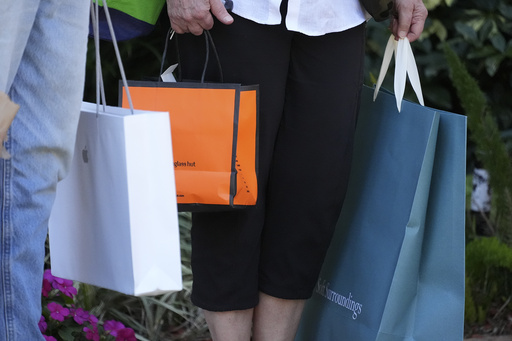One of the less-publicized initiatives by major U.S. retailers involves granting customers complete refunds while permitting them to retain unwanted items. This practice, known as returnless refunds, is being increasingly utilized to enhance customer satisfaction among online shoppers while simultaneously mitigating the escalating costs associated with processing returns, including shipping expenses.
Retail giants such as Amazon, Walmart, and Target have opted not to reclaim certain items due to the high costs of retrieval. For instance, for a low-cost item like a $20 T-shirt, the shipping fees to recover it might exceed $30. There are also products that have limited resale potential, such as single-use goods like plastic straws, or items like medications that cannot be sold again for safety reasons.
Experts indicate that while returnless refunds are largely sporadic and typically applied to inexpensive items, some users report receiving this courtesy even for higher-priced items. For example, Dalya Harel, a 48-year-old customer, encountered this scenario after ordering a desk from Amazon for about $300. Upon its arrival, she discovered it was missing crucial components, making assembly impossible. Since the item was out of stock and she needed it quickly for her New York-based lice removal service, she contacted Amazon’s customer service. To her surprise, she was informed that she would receive a refund without the need to return the desk.
“That’s one less headache to deal with,” Harel remarked, expressing relief at not needing to make a trip to the post office. She creatively repurposed the desk parts as shelves in her Brooklyn office.
The mechanics of this refund practice remain somewhat obscure, as companies are reluctant to detail the conditions under which returnless refunds are granted, primarily due to apprehensions surrounding potential fraud. Nonetheless, this approach appears to be growing across various sectors in retail.
Amazon has reportedly engaged in this practice for years and recently revealed in August its plans to extend returnless refunds to third-party sellers that generate significant sales on its platform. This program allows sellers using Amazon’s fulfillment services in the U.S. to offer customers a traditional refund for purchases that fall below $75, along with the option for customers to keep the items without the need to return them. Although Amazon has not elaborated on the specifics of this program, it has focused on international sellers and budget-friendly products, including a new section of its website allowing customers to purchase inexpensive items shipped directly from China, which will also qualify for returnless refunds.
In a similar vein, Walmart has implemented comparable options for its online marketplace vendors, allowing sellers to establish price thresholds and choose their participation level. Meanwhile, online retailers founded in China, like Shein and Temu, have also adopted returnless refunds for select orders. Target, Overstock, and Chewy have reported similar policies, with some customers encouraged to donate unwanted items to animal shelters as part of their shopping experiences. However, Wayfair has not responded to inquiries about its policies regarding this practice.
Many retailers have come to carefully analyze who qualifies for these refunds and under what situations. Often, companies utilize algorithms that evaluate various aspects to make determinations on a case-by-case basis. These algorithms consider factors such as a shopper’s reliability based on past purchase and return habits, shipping costs, and demand for the specific products they possess. According to Sender Shamiss, CEO of goTRG, a company that aids retailers like Walmart in reverse logistics, this decision-making process is crucial.
Optoro, a firm that facilitates returns for clients like Best Buy, Staples, and Gap, notes that some brands extend returnless refunds as a discreet loyalty benefit, contingent on the customer’s overall value to the retailer. This notion is echoed by Amazon, which has acknowledged it offers returnless refunds on a “very small number” of items strictly as a “convenience to customers.” Furthermore, the company has expressed satisfaction regarding feedback from sellers who can now inform customers they may keep certain products while still receiving refunds, although they did not divulge the fraud detection measures or eligibility criteria involved.
The online shopping landscape has evolved considerably, especially as costs associated with returns have climbed due to increased demand and inflation. The surge in online shopping during the COVID-19 pandemic has reinforced consumer habits of buying items with the intent of returning those that don’t meet their expectations.
In 2022, U.S. consumers returned approximately $743 billion worth of goods, equating to 14.5% of total purchases, a notable rise from previous years. This return trend has presented challenges for retailers, not only in handling returns but also dealing with fraudulent activities, which constituted around 14% of returns last year, thereby imposing substantial financial burdens.
In response to rising costs, some retail companies like H&M, Zara, and J. Crew have implemented return fees, while others have curtailed their return policies. Additionally, certain retailers, like the Canadian company Ssense, are considering banning frequent returners suspected of abuse from their platforms. However, this perspective is not universal, as some businesses recognize that frequent returners may also be their most lucrative customers, provided they retain more products than they return.


